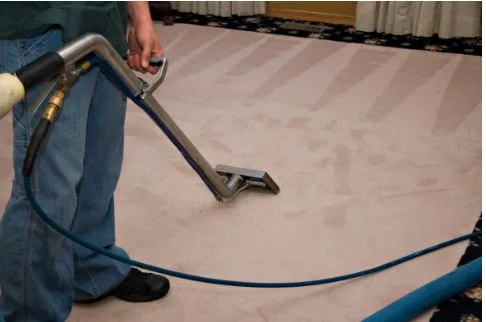Simple Ways to Improve Indoor Comfort During Cold Weather
When winter rolls in, do you find yourself constantly adjusting the thermostat, layering up, or wondering why your home still feels chilly? Cold weather can make indoor life uncomfortable if your home isn’t properly prepared. Whether you’re facing occasional cold snaps or a long winter season, taking steps to boost warmth and coziness can make a huge difference. People across the U.S, including places like Windsor, CO, often struggle with keeping their homes comfortable when temperatures drop.
In this blog, we will share practical and easy ways to improve indoor comfort during cold weather that anyone can follow.
Seal Drafts and Air Leaks
Drafts are one of the main reasons your home may feel cold even when the heat is on. Gaps around windows, doors, and baseboards let warm air escape and cold air creep in. These small leaks can make your heater work harder and raise your energy bills. A simple way to fix this is by sealing up those gaps using weather stripping, door sweeps, or caulking.
You can also check for leaks by holding a lit candle or incense stick near suspected areas—if the flame flickers, you’ve found a draft. Pay attention to attic access doors and outlets on exterior walls too. These are often overlooked but can be problem areas.
Schedule Heating System Maintenance
Keeping your heating system in top shape is key to staying warm during winter. A well-maintained furnace works more efficiently, heats your home faster, and uses less energy. It’s important to have your system inspected by a professional at least once a year before the cold season starts.
In areas like Windsor where winter temperatures can dip quite low, reliable heating is a must. If your furnace has been making odd noises or isn’t heating evenly, it might be time to look into furnace repair in Windsor, CO. Addressing problems early can prevent more expensive breakdowns later. Regular maintenance helps extend the life of your system and ensures you’re not left in the cold when you need heat the most.
Use Thick Curtains and Insulated Window Coverings
Windows are a common source of heat loss, even when they’re closed. Cold air can seep through, and warm air can escape, making rooms feel drafty. One simple fix is to switch to thermal or insulated curtains during the winter months. These heavy drapes are designed to block cold air from entering and keep heat trapped inside. They also add a cozy look to your space.
Keep curtains open during the day to let natural sunlight in. Sunlight helps warm up the room for free. Then close them at night to trap the heat. If you don’t want to replace your current curtains, you can layer them or add a thermal lining to improve their insulating power. This small change can reduce the chill near windows and make your rooms feel more comfortable.
Add Area Rugs to Bare Floors
Hard flooring like wood, tile, or laminate can feel ice-cold underfoot in winter. These surfaces don’t retain heat well, and they can make a room feel colder than it actually is. Adding area rugs is an easy way to create warmth underfoot and improve insulation. Rugs help trap heat, reduce drafts from the floor, and add a soft, cozy feel to your home.
Choose thick, plush rugs for living areas, bedrooms, and hallways. Even smaller runners can make a big difference in places where you walk a lot. Not only do they help keep your toes warm, but they also reduce the amount of heat lost through the floor. Plus, rugs add color and texture, making your home feel more welcoming during chilly weather.
Use a Programmable Thermostat
A programmable thermostat makes it easier to manage indoor temperatures without constantly adjusting the settings. You can set it to warm up your home before you wake up, lower the temperature while you’re out, and heat it again before you return. This saves energy and keeps your home comfortable when it matters most.
Some smart thermostats even learn your schedule and make adjustments automatically. They can be controlled from your phone, so you can make changes even when you’re not home. This helps maintain a stable indoor temperature and prevents cold spots. Over time, it can also lower your heating costs and take some stress off your furnace during the winter months.
Layer Clothing and Blankets Indoors
Sometimes, the simplest solutions are the most effective. Wearing warm layers inside can help you stay comfortable without turning up the heat too much. Start with thermal or cotton base layers, and add sweaters or hoodies as needed. Thick socks and cozy slippers can also help keep you warm from head to toe.
You can also keep blankets nearby in the living room or bedroom. Fleece or wool blankets are great for snuggling up during the evening or while watching TV. This helps you stay cozy without needing to raise the thermostat every time you feel a chill. Small actions like layering up can reduce heating use and make your home feel warm and inviting.
Close Off Unused Rooms
If you’re not using every room in your house, it makes sense to close off the ones you don’t need to heat. This helps direct warm air to the spaces you spend the most time in and prevents heat from being wasted in empty areas. Shut the doors to unused bedrooms or storage rooms and block the bottom of the door with a rolled towel or door snake to stop drafts.
You can also close the vents in those rooms if your system allows it. This helps focus the airflow where it’s needed most, improving the comfort level in your main living spaces. Being strategic about how you heat your home can make a big impact on both warmth and energy savings during the cold season.
In conclusion, comfort during cold weather isn’t just about turning up the heat. It’s about making thoughtful choices that help keep warmth inside and cold out. These tips work together to create a home that feels warmer, cozier, and more energy-efficient.





